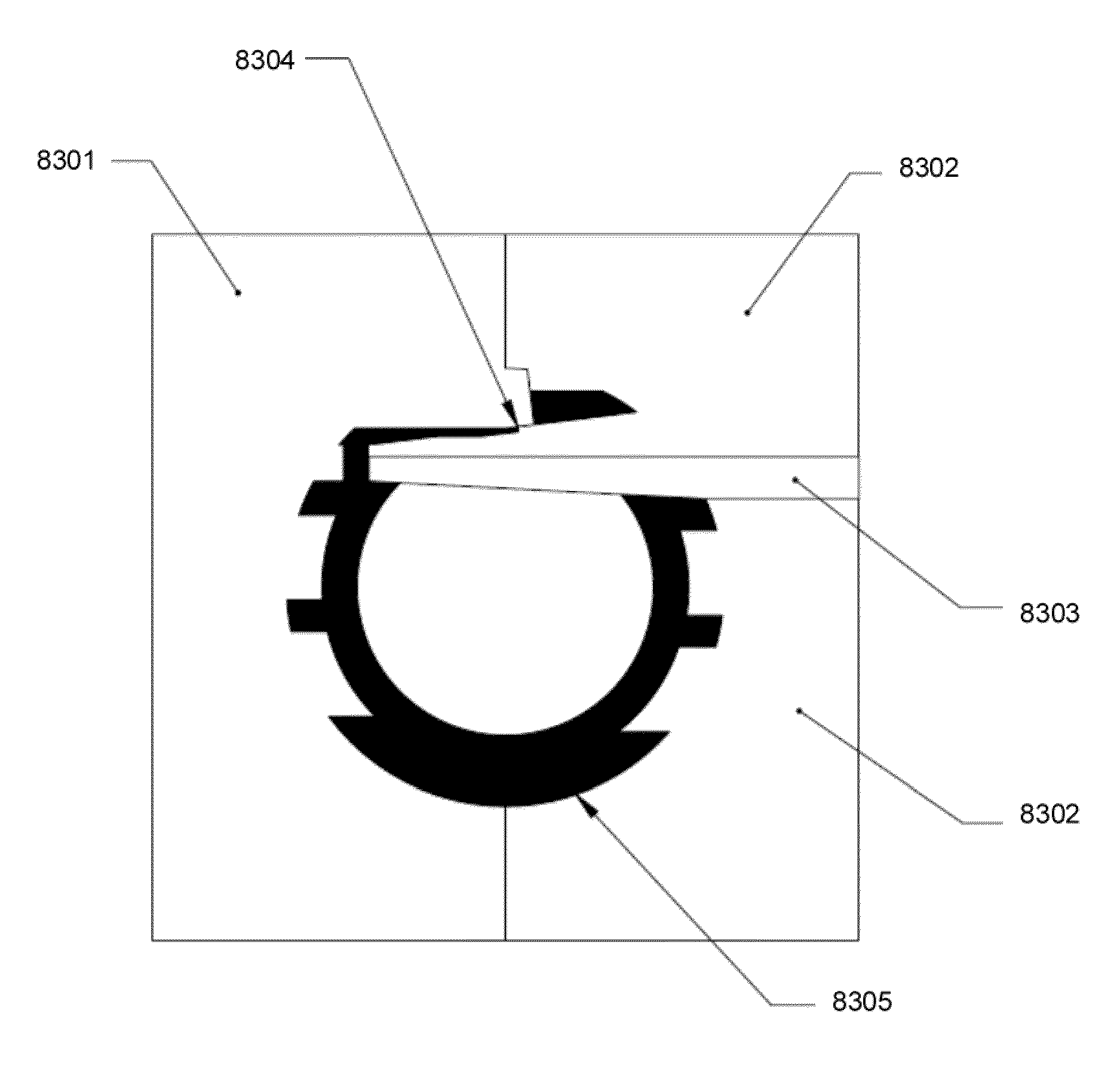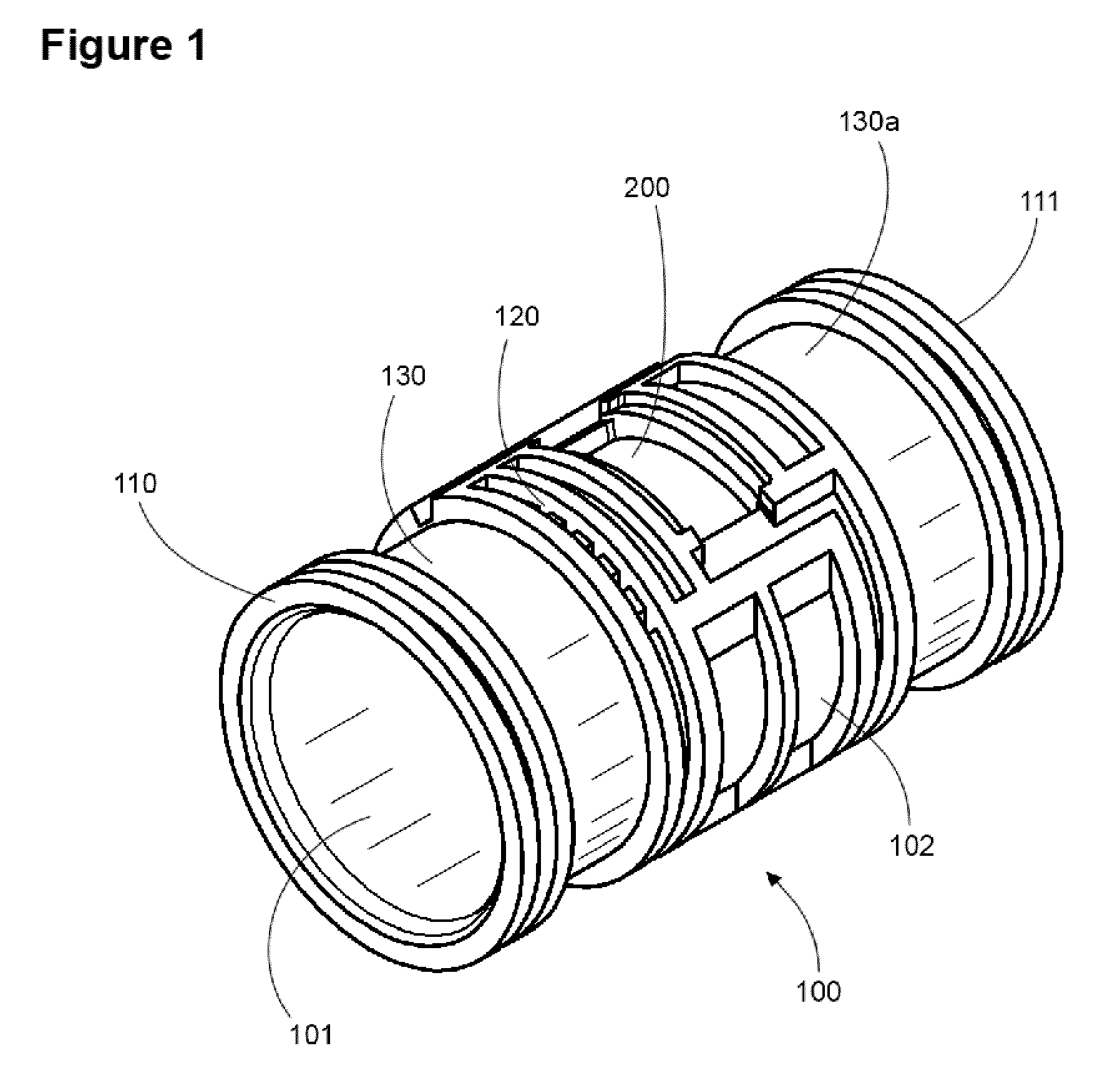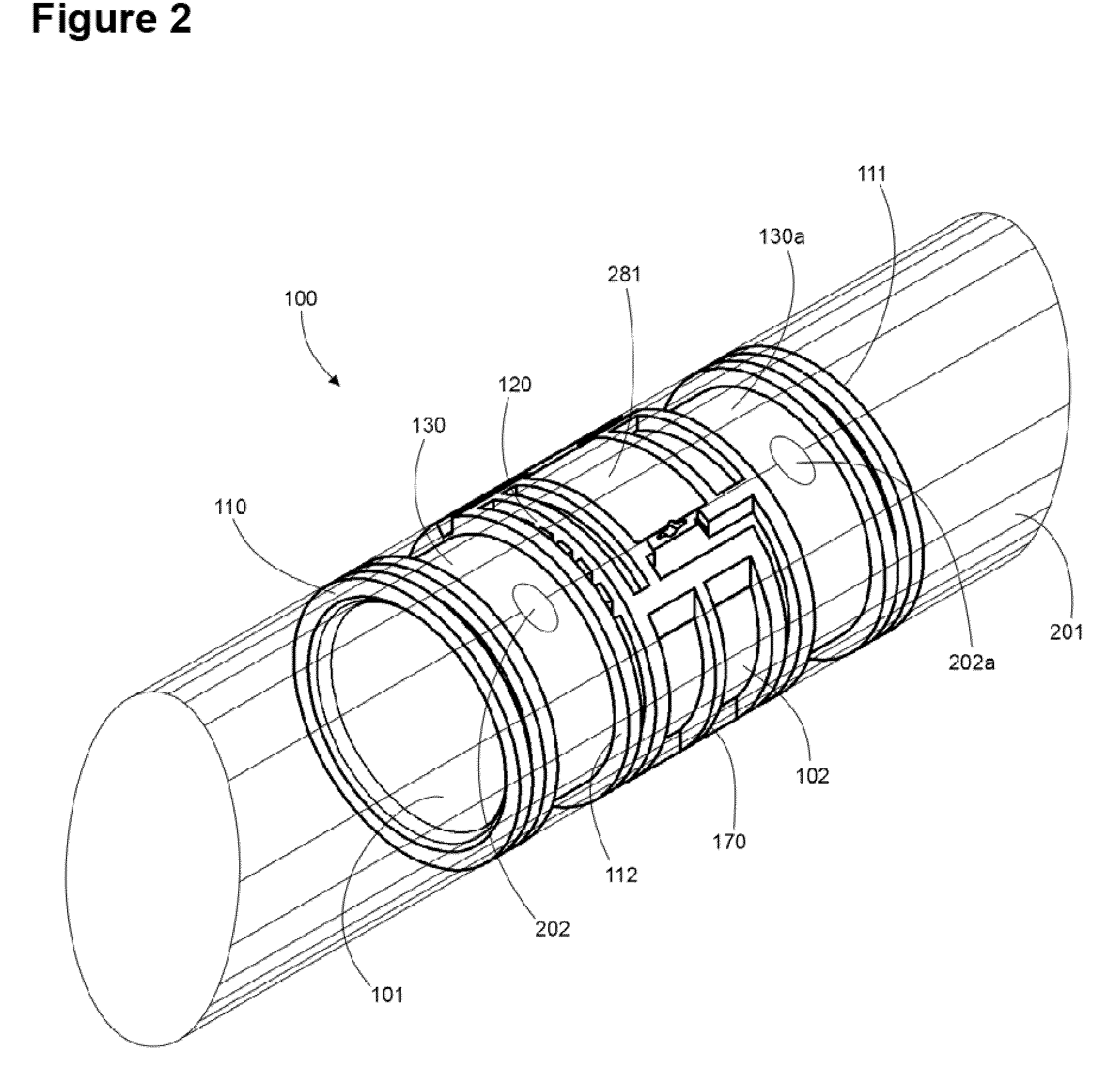Internally pressure compensated non-clogging drip emitter
a drip emitter and pressure compensation technology, applied in the field of irrigation equipment, can solve the problems of not being able to easily roll up the pipe, and achieve the effect of resisting clogging and preventing clogging
- Summary
- Abstract
- Description
- Claims
- Application Information
AI Technical Summary
Benefits of technology
Problems solved by technology
Method used
Image
Examples
second embodiment
[0134]FIG. 15 is a perspective view of the drip emitter. In this semi-cylindrical embodiment, water enters the drip emitter through filter 120, passes into labyrinth 140, through water retainment valve 281 that may also include an integrated pressure compensation member and into pool 130. Placement of the water retainment valve after the initial portion of the labyrinth, or after the end of the labyrinth allows for minimizing the labyrinth to exposure to the elements and prevents clogging.
[0135]FIG. 16 is a top view of a second embodiment of the drip emitter. In this view, water retainment valve 281 is shown from the top. FIG. 17 is a side cross-section view of a second embodiment of the drip emitter shown in FIG. 16. In this view flaps 401 are shown from the side. FIG. 18 is an end cross-section view of a second embodiment of the drip emitter shown in FIG. 16. In this view, flaps 401 are seen from the end within water retainment valve 281.
[0136]FIG. 19 is a side view of a second em...
first embodiment
[0178]Embodiments include an emitter body having inner surface 101, outer surface 102 (see FIG. 68) that forms the floor of the emitter working elements, first end 110 and second end 111. The drip emitter also includes an outer portion which refers to the portion that contacts an enclosing pipe and an inner portion that is utilized herein to signify anything beneath the floor of the outer surface 102. The emitter of FIG. 65 is inserted into a pipe or hose as is shown (with respect to the first embodiment) as a shaded tube in FIG. 2 wherein holes are created in the hose to allow water flowing from the inside of the pipe, and hence inside of inner surface 101 through inlet or filter 120 (wherein the inlet may be utilized as a placeholder for a fluid retainment valve for example), through labyrinth 140, to pressure compensating chamber 6510 (shown as the empty volume above the deformable element 6501 that is enclosed by an enclosing pipe), to pressure compensating chamber exit 6502 and...
PUM
| Property | Measurement | Unit |
|---|---|---|
| pressure | aaaaa | aaaaa |
| inner diameter | aaaaa | aaaaa |
| height | aaaaa | aaaaa |
Abstract
Description
Claims
Application Information
 Login to View More
Login to View More - R&D
- Intellectual Property
- Life Sciences
- Materials
- Tech Scout
- Unparalleled Data Quality
- Higher Quality Content
- 60% Fewer Hallucinations
Browse by: Latest US Patents, China's latest patents, Technical Efficacy Thesaurus, Application Domain, Technology Topic, Popular Technical Reports.
© 2025 PatSnap. All rights reserved.Legal|Privacy policy|Modern Slavery Act Transparency Statement|Sitemap|About US| Contact US: help@patsnap.com



